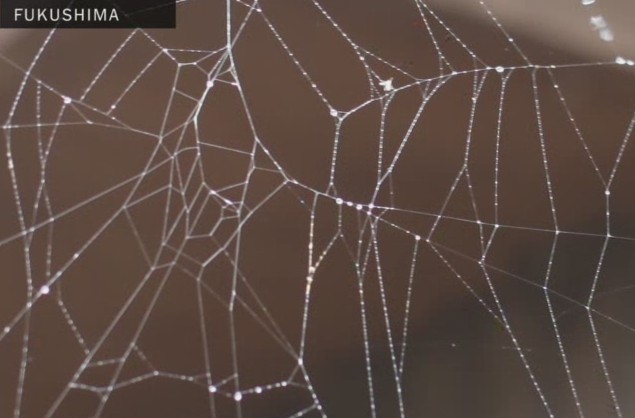Public Radio Exchange, Donna Descoteaux, Oct. 2013: Dr. Timothy Mousseau, a Professor in the Department of Biological Sciences at the University of South Carolina […] shares with us the results of his research at Chernobyl and Fukushima, which shows significant increases in genetic damage, birth defects in animals and humans, increased tumor rates and developmental abnormalities, biodiversity in decline, local extinction of some species and transmission of mutations over generations. […] Dr. Mousseau’s research is critical and alarming […]
- At 17:00 – Barn swallows in Fukushima, many of them, perhaps 10% so far that have been surveyed are showing patches of these white feathers, just as we documented for Chernobyl. So it looks like the same thing is happening in Fukushima […] It was really shocking to us to see these tumors […] as high as we were seeing them. We just published a paper summarizing the results of this 10+ years survey […] Much to our surprise — many species of birds were showing signs of decline in the most contaminated parts of Fukushima Prefecture and we then found that again the pattern was very similar to what had occurred in Chernobyl. When we looked at 14 species that were identical in both areas we found that they showed the same sort of pattern but that the strength of the response of the negative response to radiation was more than 2 times in Fukushima as what we currently see in Chernobyl — implying that the effects are stronger in Fukushima, right now at least.
- At 23:30 in — I just got back from Japan and initial survey of barn swallow population in the most contaminated areas. Anecdotally, things are not looking good for the birds in these very heavily contaminated areas — there’s just very few of them left.
- Full interview here
New York Times, May 5, 2014: Mousseau […] and colleagues have reported […] higher frequencies of tumors and physical abnormalities like deformed beaks […] and a decline in the populations of insects and spiders […] Abnormalities and other effects of radiation are seen at much lower radiation levels than in lab-based studies, he said. […] Dr. Mousseau has expanded his work to include similar studies in Japan — he’s made about 10 trips there. Already, he said, he is seeing some Chernobyl-like effects […]
New York Times Video, May 5, 2014 (at 2:00 in): — Dr. Tim Mousseau: “An overall decrease in the biodiversity on the order of 50% fewer species in the hotter areas […] It occurred to us after visiting Fukushima last year that some of those spider webs looked a little strange and so we thought we would test that hypothesis.
